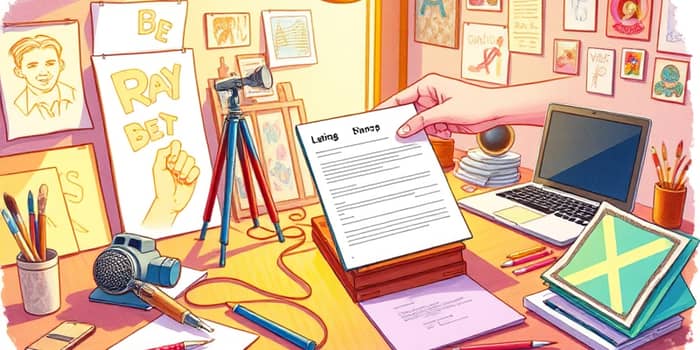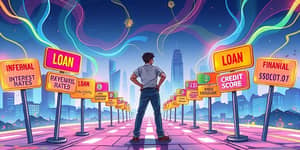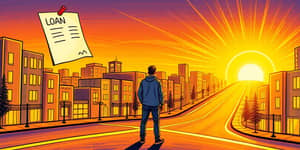
Every day, countless artists and innovators wake with a spark of inspiration, only to see that spark dim under the weight of financial uncertainty. The brushstroke remains unfinished, the script unwritten, the melody unsung.
Yet somewhere, beyond the horizon of doubt, a path exists to transform that spark into a blazing light. Personal loans have emerged as a guiding lantern, offering flexible and accessible solution to many creators who yearn to build their passions into tangible works.
Creative individuals often face a harsh reality: funding sources are limited and fiercely competitive. Grants are awarded sparingly, sponsorships reserved for established names, and public funding bound by bureaucratic red tape.
Without the right resources, projects—whether a debut novel, an independent film, or a new art installation—can stall before they even begin. This funding gap creates a barrier between raw creative ambition and the fulfillment of those dreams.
At their core, personal loans are unsecured financial products offered by banks, credit unions, and online lenders. Unlike secured loans—such as mortgages or auto loans—these require no collateral, making them uniquely suited for creative endeavors.
Lenders assess creditworthiness through credit scores, income verification, and employment history. For those with lower scores, co-signers can help unlock the capital needed to pursue a vision. Once approved, the borrower receives a lump sum, to be repaid over a specified term, typically ranging from one to seven years.
These figures reveal not only the vast scale of personal lending but also the thriving cultural economy that personal loans help sustain.
With immediate access to funds, artists can seize fleeting opportunities, rather than wait for grant notifications or crowdfunding milestones.
Advantages include the ability to maintain creative control—unlike equity investors—and the absence of restrictions on how funds are used. Loans can be approved in days, enabling rapid project initiation.
Disadvantages come in the form of interest payments, which may be higher than secured options, and the obligation to repay regardless of project success. Creators must guard against overborrowing and ensure that debt remains manageable within their long-term financial health.
Embarking on a creative journey with borrowed funds demands both heart and discipline. Start by crafting a detailed budget that outlines every projected expense. Be honest about personal needs—rent, utilities, healthcare—and how those fit alongside project costs.
Next, build in a contingency fund to address unexpected overruns. Creative problem-solving, such as swapping paid services for collaborations or leveraging social media for cost-effective promotion, can stretch every dollar further.
Finally, establish clear milestones with deadlines and deliverables. This phased approach provides both motivation and accountability, ensuring that each loaned dollar aligns with progress toward the ultimate goal.
While personal loans fill a critical niche, creators should remain aware of other avenues. Crowdfunding platforms reward compelling storytelling and community engagement. Peer-to-peer networks connect borrowers with individual investors seeking diverse portfolios. Grants, sponsorships, and angel investments can offer zeros-interest or equity-based capital, each with its own trade-offs.
In 2025, traditional arts funding remains vital. The National Endowment for the Arts awarded $36.8 million in grants, while state agencies boosted per capita arts funding to $2.13 in the Midwest. Foundations such as Creative Capital and the Foundation for Contemporary Arts continue to distribute millions in unrestricted and emergency grants to visionary artists.
Yet even this robust support cannot reach every creative mind. Personal loans augment public and private funding, helping individuals bridge financial gaps when other resources fall short.
Consider a playwright who secured a personal loan to cover living costs during a six-month writing residency. The resulting script went on to win national awards, recoup the loan within the first run, and launch a touring production.
Or a digital illustrator who used personal financing to purchase a high-end tablet and software license. Their enhanced portfolio attracted international clients, generating consistent revenue streams and enabling full loan repayment in under a year.
These stories underscore the transformative power of strategic borrowing when paired with unwavering creative determination.
“Personal loans can be a game-changer for passion projects,” says Andrea Lacey, tech and business blogger. “The blend of financial prudence and creative zeal is the key to a fulfilling journey.”
Pam Breaux, President and CEO of NASAA, emphasizes the ecosystem at work: “State arts agencies demonstrate their vital role in fostering resilience and cultural vibrancy.”
George Tzougros, Executive Director of the Wisconsin Arts Board, adds, “Legislative appropriations are an incredibly important ingredient in the arts funding mix.”
The journey from concept to creation rarely follows a straight line. It is paved with obstacles, doubts, and moments of uncertainty.
Yet personal loans provide a powerful tool in the hands of determined creators. With solid repayment plan, resourceful budgeting, and a steadfast commitment to the craft, artists and innovators can overcome financial hurdles and bring their visions to life.
In an era where the creative economy expands at twice the rate of the broader market, seizing every opportunity is essential. Personal loans offer that crucial opportunity, bridging the gap between idea and reality, and inviting each dreamer to take the next bold step.
References













